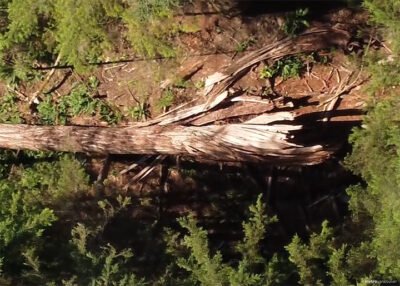After Central Michigan University student Natalie Belsito performed “magic” and pulled a squirrel back from the brink of death, the video showing her feat went viral across the world. When animals face various kinds of cruelties at the hands of human beings, her act was inspiring and as good a news as it can get.
Belsito was in her friend’s dorm when she came to know a squirrel had fallen into a nearby pond and was drowning. She got the squirrel out of the pond and performed CPR (cardiopulmonary resuscitation) on it with a towel.
Belsito brought the squirrel back to the dorm and put it in a box filled up with bags of hot water. Using a blowdryer, she dried the squirrel. When she brought the box out near a tree, the squirrel leapt out of the box and climbed up the tree. She posted the video on Twitter with the caption “Brought a squirrel back from the dead, what was your Wednesday like?”
Belsito had no training in CPR, an emergency life-saving procedure performed on those whose breathing or heartbeat has stopped due to trauma. CPR involves chest compression as well as mouth-to-mouth or mouth-to-nose breathing. She had just seen it once in popular television TV show ‘The Office’.
Two weeks later in mid-April, another video that showed a squirrel being saved through CPR went viral. Shot by one Emerson Salcedo D’Andrey in Colombia, the video shows a man compressing the chest of an injured squirrel for a minute after which the Squirrel jumps back to life.
These videos will inspire a lot of people fo try CPR on dying animals. If Belsito can successfully resusicate the squirrel by performing a procedure she had watched on a TV show, why can’t anyone learn to do it by watching the Blesito video? Someone who does not have adequate training or knowledge of CPR can actually end up kill or harming the animal further. Animals can also react violently to the procedure for they won’t know why you are actually helping them.
Animal anatomy can be challenge too. “The challenge is that, unlike people who are all shaped kind of similarly, dogs and cats can have a lot of variability in the way their chests are shaped,” Daniel J. Fletcher, associate professor of emergency and critical care at Cornell University College of Veterinary Medicine, told National Geographic.
Fletcher, who teaches an online course at Cornell about pet CPR, said that for a deep and narrow chest like that of a squirrel (and many breeds of dogs and cats), it was best to squeeze from the side rather than to apply pressure straight to the breastbone. For dogs and cats Fletcher recommends mouth-to-snout resuscitation.
While one should try CPR if one must, it’s better to get a short formal training. According to American Heart Association, if you’re not trained in CPR, then provide hands-only CPR. That means uninterrupted chest compressions of 100 to 120 a minute until paramedics arrive.









Comments
NOTE: The North Shore Daily Post welcomes your opinions and comments. We do not allow personal attacks, offensive language or unsubstantiated allegations. We reserve the right to edit comments for length, style, legality and taste and reproduce them in print, electronic or otherwise. For further information, please contact the editor or publisher, or see our Terms and Conditions.